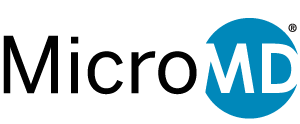Unless you’ve been living under a rock, you’ve likely heard about the increase in consumerism among patients. Due to a greater amount of healthcare cost responsibility falling to patients, these individuals have become more choosy in the care they receive. What exactly do we mean by consumerism, though? What are the trends, and how can providers keep up? Read on to find out.
What is consumerism?
While most of us have been familiar with the term “healthcare consumerism” over the past decade or so with the rise of value-based care, the term has actually been used to some degree as far back as the 1930s with individuals advocating for universal health insurance. Today, though, healthcare consumerism refers to patient’s responsibility in paying for their healthcare and the personal choice regarding their care that follows. This responsibility in paying for healthcare is largely the result of high-deductible health plans (HDHPs) which leave patients paying for the bulk of their care out of pocket in spite of having health coverage. As patients have realized that they’re paying for their healthcare just like any other service they receive, they’ve adopted the same consumer-driven attitude when choosing their providers and care, making patient satisfaction an important metric for practices to pay attention to, as unsatisfied patients will move on to a provider they feel meets their needs.
What are the trends?
Healthcare consumerism means that providers must be concerned with what patients are looking for and work to fulfill those needs. With this in mind, one big trend relating to healthcare consumerism is telehealth and remote patient monitoring. Patients are looking for convenience. Gone are the days when patients will sacrifice half of their day for a doctor’s appointment. With telehealth, patients can see their doctors in a more flexible way that fits into their schedule and values their time commitments. Similarly, remote patient monitoring allows providers to keep tabs on patients’ chronic conditions without causing disruption to those patients’ daily lives.
Another trend related to healthcare consumerism is increased automation. Patients are busy, just like everyone else. Medical bills can get lost in the shuffle unpaid. Appointments can be forgotten. With digital reminders, patients can keep these important items top of mind and take care of them at their convenience. This eliminates a lot of frustration, improving patient satisfaction.
Finally, price transparency is a big piece of the consumer-driven healthcare market. When patients are responsible for the cost of their own care, they need to know in advance what that cost is. This makes perfect sense. There is no other good or service that we agree to purchase without knowing the cost in advance. It’s imperative that providers adjust to this new healthcare environment by providing cost estimates up front.
How can providers attract new patients and keep current ones?
In the age of healthcare consumerism, attracting new patients and retaining those you have is all about communicating how you meet their needs. This begins with building a strong website, preferably one that is mobile-responsive. Patients are now looking for healthcare in much the same way that they search out every other good or service they need – online. And where do people do much of their online searching now? On their phones. With this in mind, it’s important to make sure that your website not only clearly communicates what your practice is all about and how you’re poised to meet your patients’ needs, but also that this website is going to be viewable on a smartphone.
It’s also important to encourage online reviews. Whether you realize it or not, your practice has a reputation on review sites. If you’re not actively pursuing reviews from your satisfied customers, those sites will likely show a negatively skewed view of your practice. This is because people are more likely to give a review on their own when they’re unsatisfied than when they’re happy. So set up a system to remind your patients to share their experience so that your online reputation will be accurate.
Staying active on social media is also important. By sharing educational content that your current patients and followers can share, you’re likely to reach potential patients who may remember your practice when they are looking for new care.
Finally, embrace technological advances. Remember, automation is important, as is telehealth. Today’s healthcare consumers want to be able to take care of their health needs as conveniently as possible. When they get lab work done, they want to view their results through the portal rather than waiting for a phone call. When they need a quick appointment, they’d love to see their provider virtually so they don’t have to take as much time away from work. They’d rather schedule appointments online than sit on the phone. Whatever technology you can bring into your practice to make your patients’ experience more streamlined will help you in not only retaining your current patients, but also attracting new ones.
Healthcare consumerism isn’t new and also isn’t likely to be going anywhere. In order to see success moving forward, practices must work hard to provide the features patients are looking for. With this in mind, MicroMD has partnered with some fantastic vendors that offer the tech tools that will increase patient satisfaction. AutoRemind offers patient engagement and electronic communication tools to grow your practice and make it more efficient, such as reminders, marketing, and communication. Secure Chart Patient Portal allows patients to easily and securely interact with various members of their care team and access their health information from the comfort of their own phone. Medpod enables healthcare providers to extend reach, redistribute resources, build volume and transform their business by advancing the science of virtual care, reducing costs and improving outcomes and enabling the new value-based healthcare paradigm. Finally, Demandforce is an all-in-one marketing solution for your practice, designed to help you get discovered, stay connected, and create more time for personal connections that build loyalty and boost satisfaction with your patients.
Are you ready to learn more or get started? Visit micromd.com or call 1-800-624-8832.
About the author,
Crystal Stanton

Crystal is a Digital Marketing Specialist at MicroMD. Content creation, social media management, and SEO optimization are just a few of her areas of concentration as she seeks to educate clients and prospects alike about the simple, customizable, and connected solutions we offer at MicroMD.
Looking for PM or EMR Software?
MicroMD PM and EMR/EHR is flexible and can fit almost any specialty. Let us help you get back to the business of healing.








